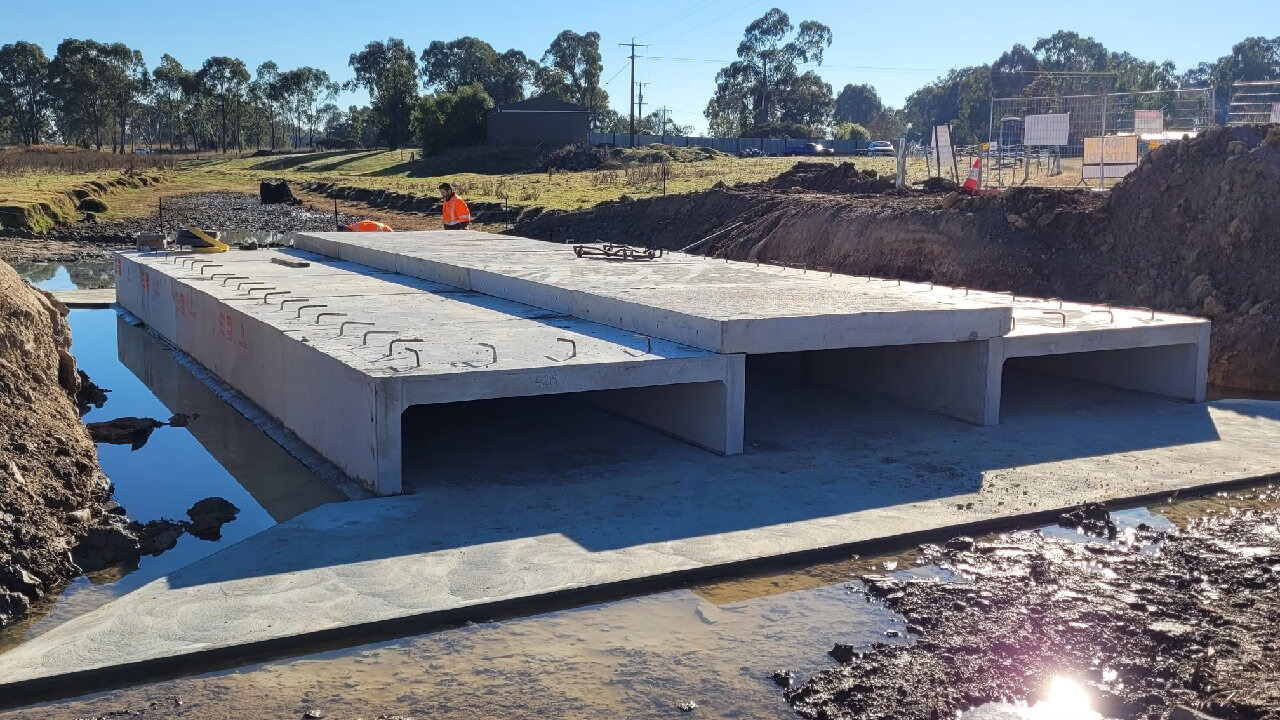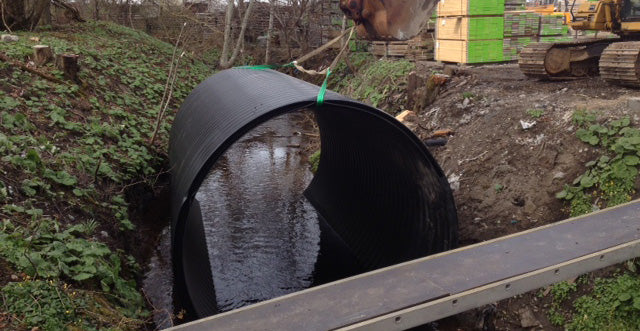Effective Underbrush Clearing for Clean and Safe Land
Effective Underbrush Clearing for Clean and Safe Land
Blog Article
Culvert Installation Made Easy: Step-by-Step Overview for Success
From choosing the appropriate culvert dimension to integrating correct drain measures, each action in the installation procedure plays an important duty in the capability and durability of the culvert system. Keep tuned to uncover the important actions and considerations that can make culvert installment a seamless and effective endeavor.
Choosing the Right Culvert Size
Choosing the suitable culvert dimension is important for ensuring effective water circulation and structural honesty in culvert installation jobs - Pad Construction. The dimension of the culvert directly affects the circulation capacity of water via the framework. A culvert that is too small can lead to flooding and overflow, while one that is also huge might lead to decreased water speed, potentially triggering sediment build-up and clogs
To identify the appropriate culvert dimension, elements such as the watershed location, height circulation prices, and hydraulic effectiveness demand to be meticulously taken into consideration. Computations based upon these specifications aid in choosing a dimension that can effectively manage the predicted water volume while minimizing the danger of clogs and structural failing.
It is important to get in touch with design standards and criteria to make sure that the selected culvert dimension satisfies the task demands and local regulations (Pad Construction). By choosing the ideal culvert size, project managers can optimize water circulation, avoid prospective concerns, and enhance the general performance and durability of the culvert setup
Preparing the Installment Site
Effective culvert installment requires thorough preparation of the installment site to guarantee optimum architectural assistance and capability. Before commencing the setup procedure, it is vital to remove the site of any type of debris, plant life, or blockages that can hamper the culvert's positioning. Guaranteeing a level foundation is essential for the appropriate positioning and security of the culvert. This might include rating the website to produce a smooth, also surface that can appropriately sustain the weight of the culvert and any type of awaited tons. Furthermore, proper compaction of the soil beneath the culvert is essential to prevent working out or changing over time.
Furthermore, it is essential to consider variables such as dirt composition, groundwater levels, and environmental impacts when preparing the installation website. Performing a complete website analysis can aid determine any type of prospective difficulties or dangers that might affect the culvert's performance. By making the effort to prepare the setup website correctly, you can help assure an effective culvert installment that meets architectural demands and makes certain long-lasting functionality.
Putting the Culvert Properly

The grade at which the culvert is placed is essential for keeping a proper slope for water flow. In addition, the culvert needs to be oriented appropriately to ensure that the inlet and electrical outlet are in the correct places. Pad Construction.
Backfilling and Condensing the Dirt
Appropriate backfilling and compaction of the soil around the culvert is vital to make certain security and prevent possible problems in the future. When the culvert is correctly placed, the following critical action is to backfill the area around it with appropriate product. The backfill material must be cost-free from rocks, debris, and raw material to avoid damage to the culvert. It is recommended to utilize granular material such as sand or gravel for backfilling, as it provides excellent water drainage and compaction properties.
After putting the backfill product, it is essential to portable it in layers of consistent density. Using a compactor or a mechanical tamper, small the dirt gently to avoid harming the culvert. Compaction assists in Tree removal reducing the chances of negotiation and makes sure uniform support around the culvert. It is essential to compact the dirt equally on all sides of the culvert to preserve its architectural integrity.
Appropriate backfilling and compaction not only give stability to the culvert but additionally assist in preventing soil erosion and maintaining the longevity of the culvert system.
Making Sure Appropriate Drainage Integration
Incorporating efficient drain remedies plays an essential role in the total functionality and durability of culvert setups. Correct water drainage assimilation is important for managing water circulation, avoiding erosion, and ensuring the architectural stability of the culvert system. To accomplish this, it is essential to create a thorough drainage strategy that thinks about aspects such as the volume of water anticipated, the topography of the location, and the type of dirt existing.

Furthermore, integrating attributes like disintegration control procedures, such as riprap or plants, can better enhance the effectiveness of the drain system. By very carefully intending and carrying out these water drainage options, culvert installations can operate successfully and withstand the test of time.
Verdict
To conclude, appropriate culvert setup is critical for keeping reliable drainage systems. By choosing the right culvert dimension, preparing the installment site, positioning the culvert properly, backfilling and compacting the dirt, and guaranteeing correct drain integration, success can be attained. Complying with these actions will certainly assist guarantee the durability and performance of the culvert, inevitably adding to the general success of the water drainage system.
Report this page